这篇文章主要为大家展示了“Python面向对象和类的示例分析”,内容简而易懂,条理清晰,希望能够帮助大家解决疑惑,下面让小编带领大家一起研究并学习一下“Python面向对象和类的示例分析”这篇文章吧。
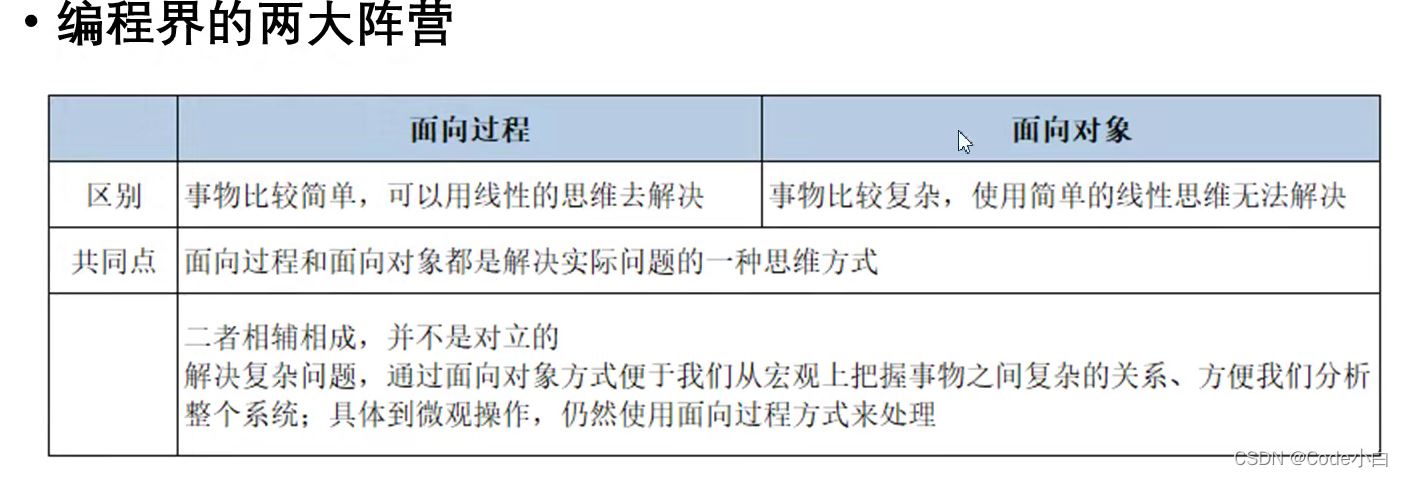
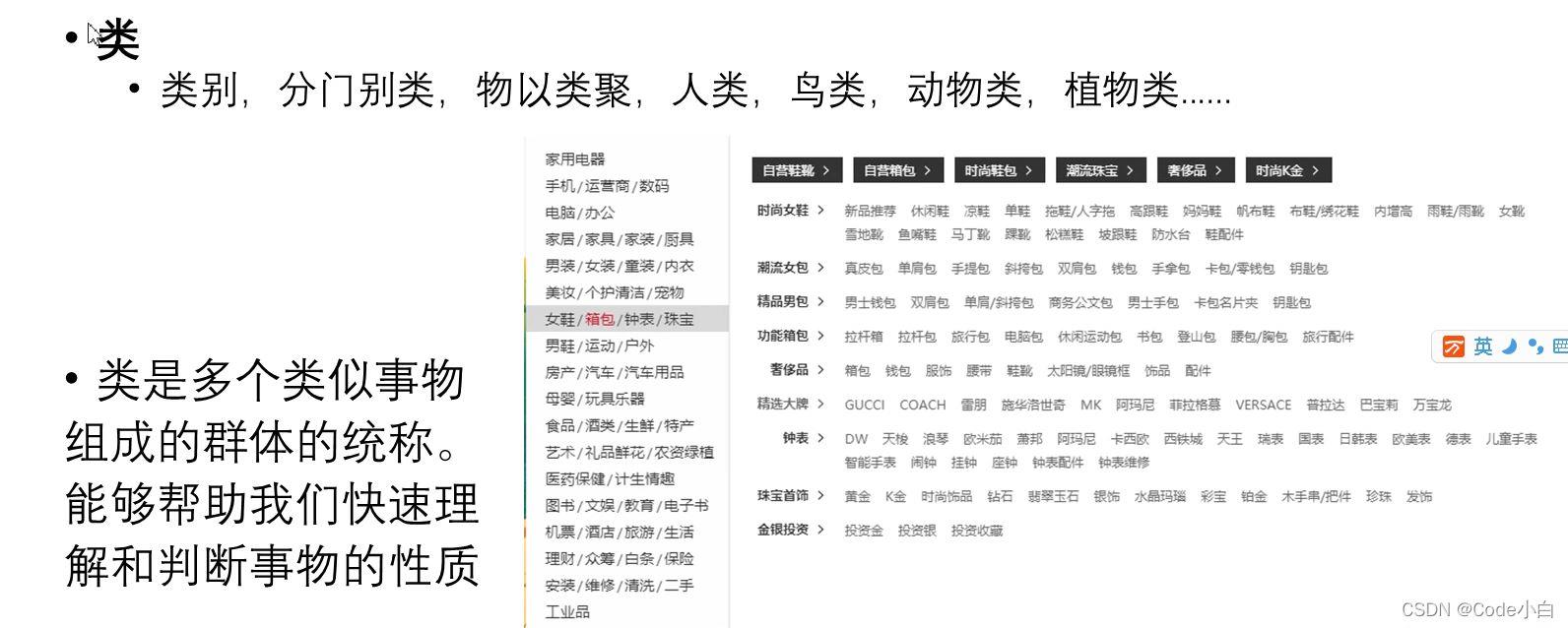
简单举例:
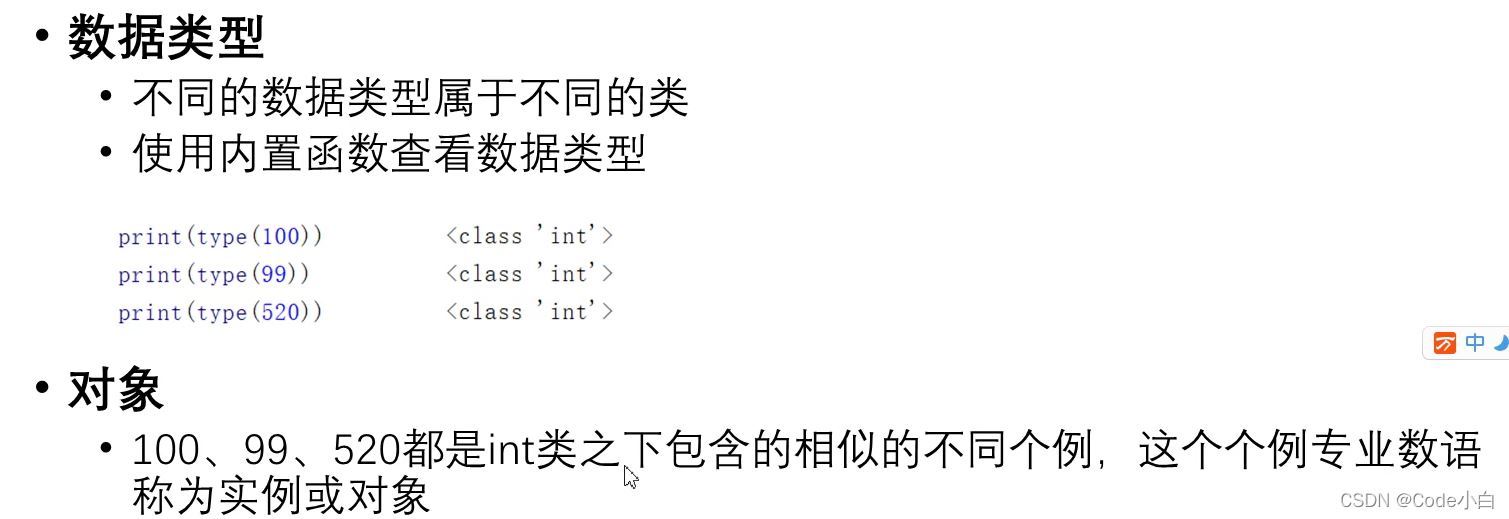
python中一切皆对象,开局一张图:
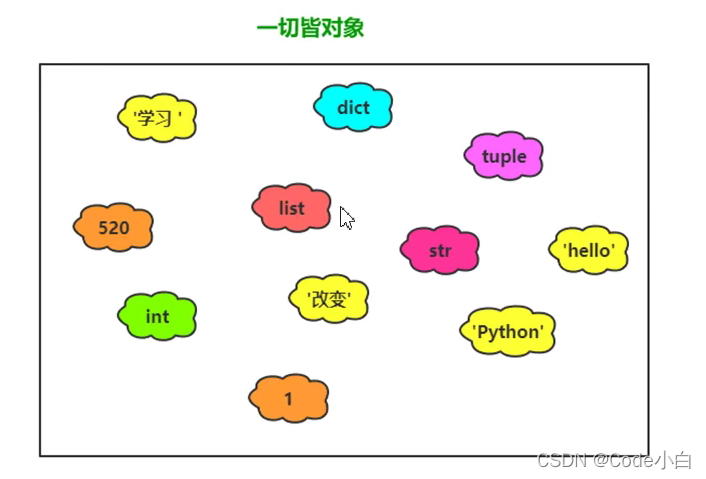
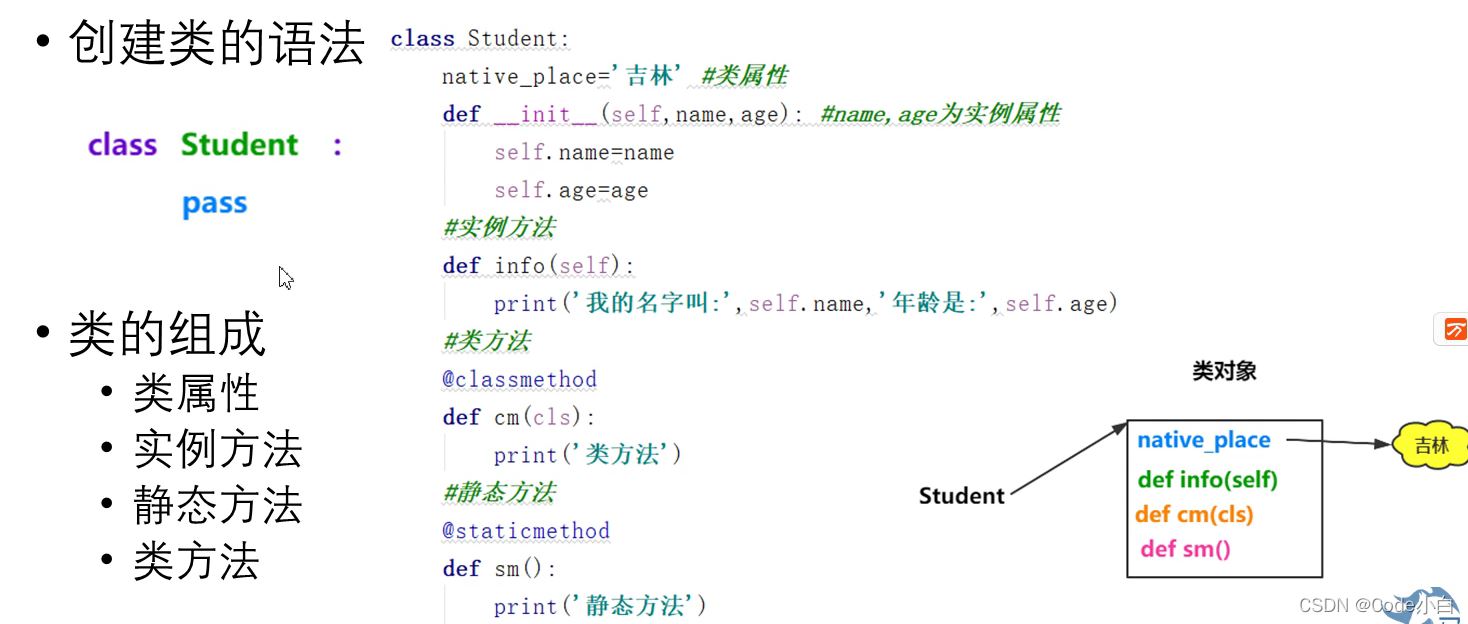
举例1:
class Student:
pass
print(id(Student)) #1149225945800
print(type(Student)) #<class 'type'>
print(Student) #<class '__main__.Student'>举例2:
class Student:
native_place='吉林' #类属性
def __init__(self,name,age):
self.name=name
self.age=age
#实例方法
def eat(self):
print("学生在吃饭")
#静态方法
@staticmethod
def method():
print("我是静态方法")
#类方法
@classmethod
def cm(cls):
print("我是类方法")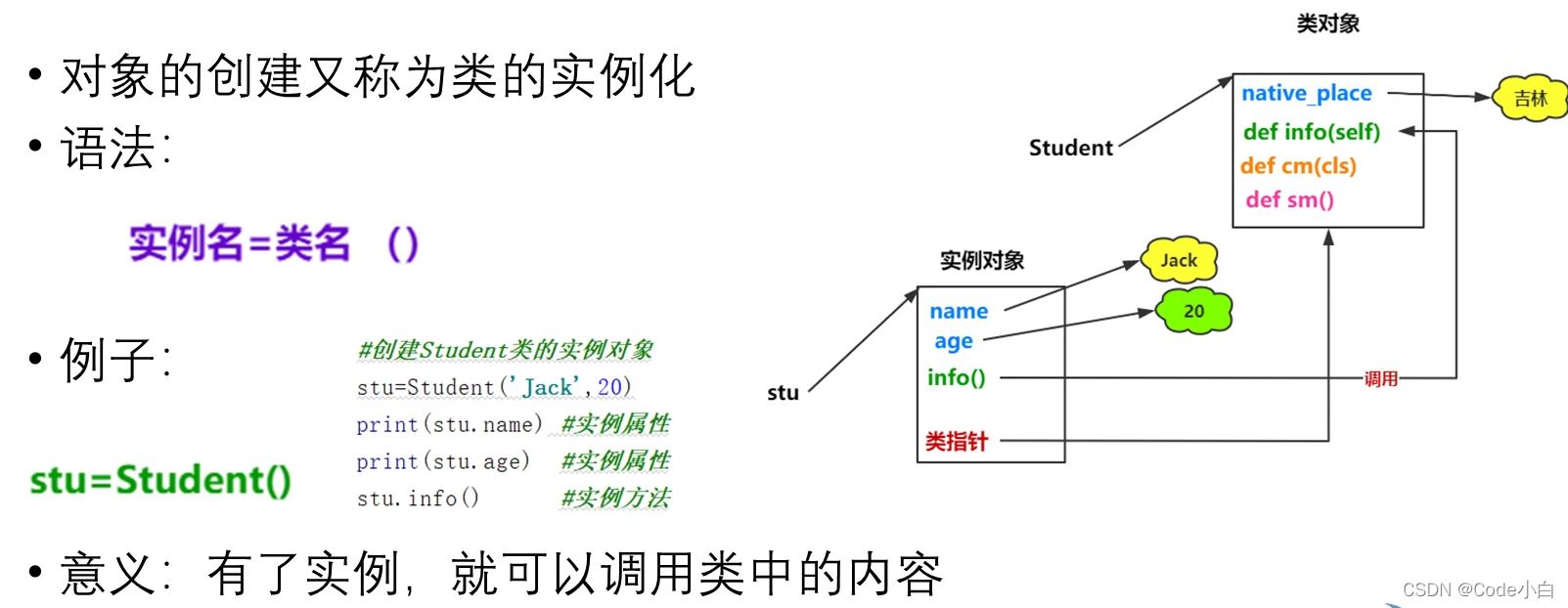
举例1:
#实例对象
student1=Student("张三",18)
print(student1)
print(id(student1))
print(type(student1))
print("-------------------------------------------")
#类对象,代表所在的类
print(Student)
print(id(Student))
print(type(Student))举例2:
#实例对象
student1=Student("张三",18)
print(student1.name)
print(student1.age)
#实例方法调用有以下两种使用:
print(student1.eat())
print(Student.eat(student1))
举例1:类属性
#类属性
student1=Student("张三",18)
student2=Student("李四",19)
print(Student.native_place) #吉林
print(student1.native_place)#吉林
print(student2.native_place)#吉林
Student.native_place='四川'
print(student1.native_place)#四川
print(student2.native_place)#四川
#---------------------------------------------------------
student1.native_place='广东'
print(student1.native_place)#广东
print(student2.native_place)#四川举例2:类方法、静态方法
#类方法、静态方法使用
student1=Student("张三",18)
Student.method()#我是静态方法
Student.cm()#我是类方法Python是动态语言,在创建对象之后,可以动态的绑定属性和方法
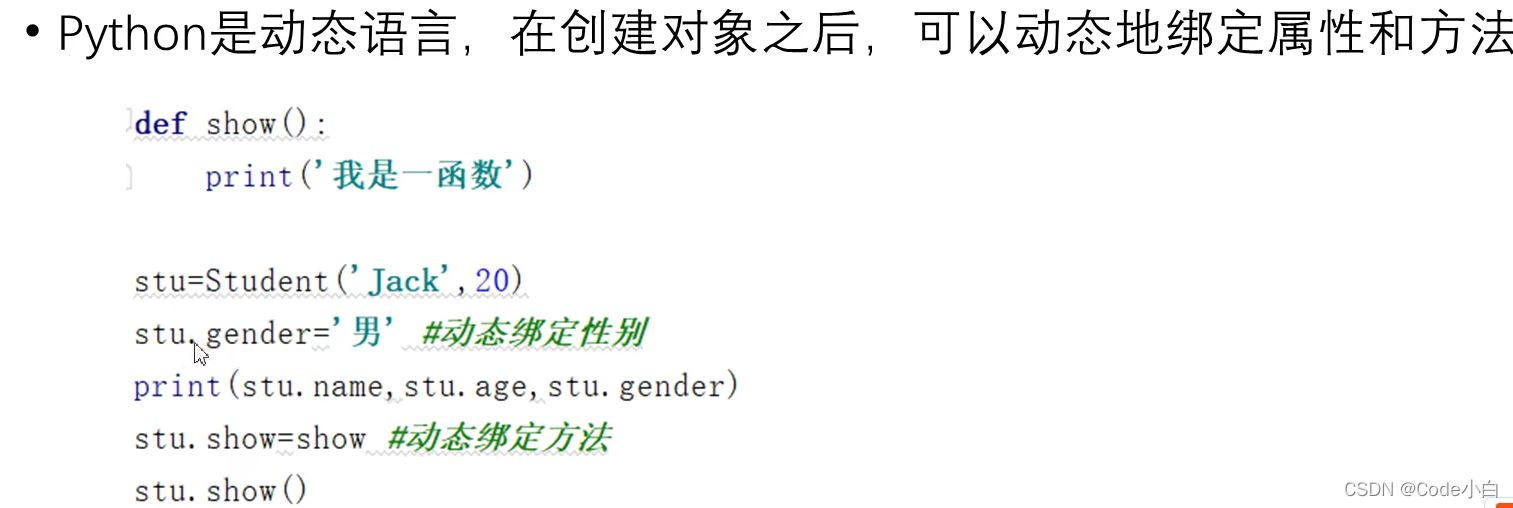
举例:属性绑定
class Student:
def __init__(self,name,age):
self.name=name
self.age=age
#实例方法
def eat(self):
print("学生在吃饭")
student1=Student('张三',19)
student2=Student('李四',20)
print(id(student1)) #2363920157896
print(id(student2)) #2363920157960
print("--------绑定属性-------")
print("绑定属性-----为student2动态的绑定gender属性-------")
student2.gender='男'
print(student1.name,student1.age) #张三 19
#print(student1.gender) 当student1访问其没有的属性时,会报错AttributeError: 'Student' object has no attribute 'gender'
print(student2.name,student2.age,student2.gender) #李四 20 男
print("--------绑定方法-------")
def show():
print('我是show方法')
student1.show=show
student1.show() #我是show方法
student2.show() #报错AttributeError: 'Student' object has no attribute 'show'内存分析:
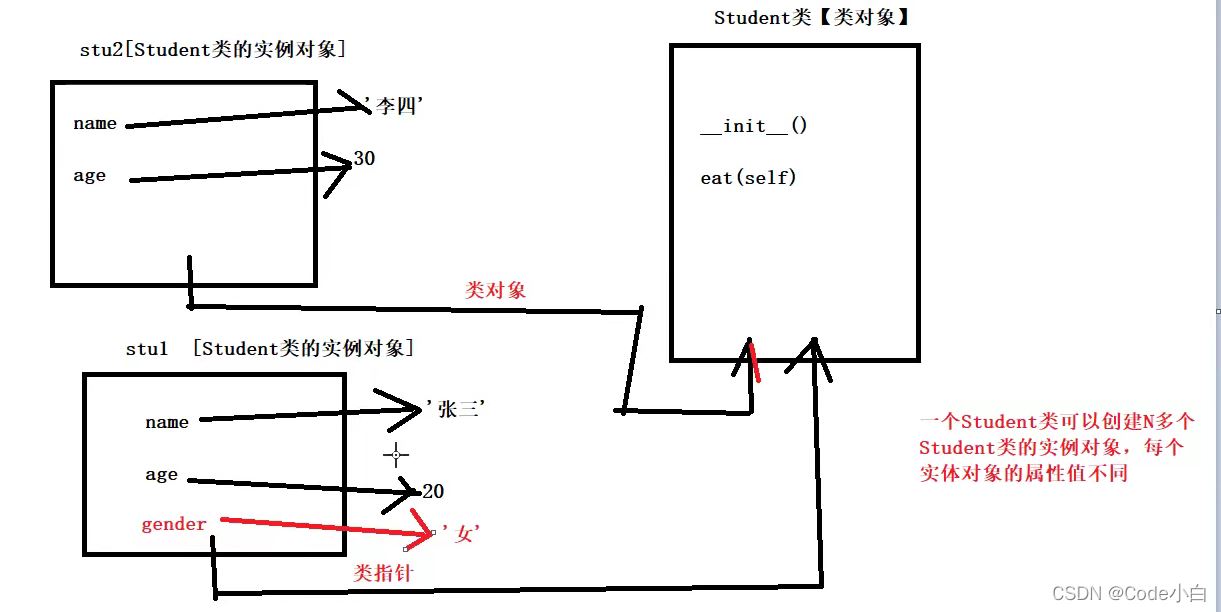
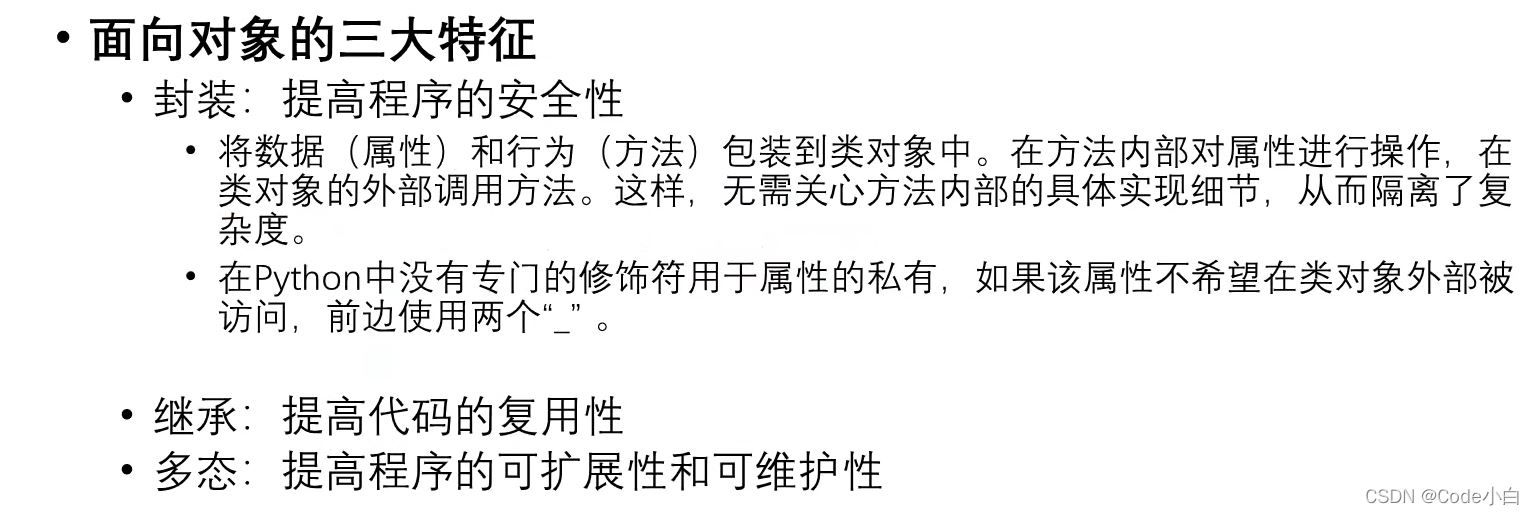
1、封装
class Car:
def __init__(self,brand,age):
self.brand=brand
self.__age=age
def show(self):
print(self.brand,self.__age)
car1=Car('宝马X5',50)
print(car1.brand) #宝马X5
# print(car1.__age) __标识的属性限制其在类外使用,在类的内部可以使用,在外面访问是会报错
#若要使用__标识的属性,可以先用dir()查出属性,再访问
print(dir(car1))
#输出['_Car__age', '__class__', '__delattr__', '__dict__', '__dir__', '__doc__', '__eq__', '__format__', '__ge__', '__getattribute__', '__gt__', '__hash__', '__init__', '__init_subclass__', '__le__', '__lt__', '__module__', '__ne__', '__new__', '__reduce__', '__reduce_ex__', '__repr__', '__setattr__', '__sizeof__', '__str__', '__subclasshook__', '__weakref__', 'brand', 'show']
print(car1._Car__age)#502、继承(与其他语言不同,python支持多继承)
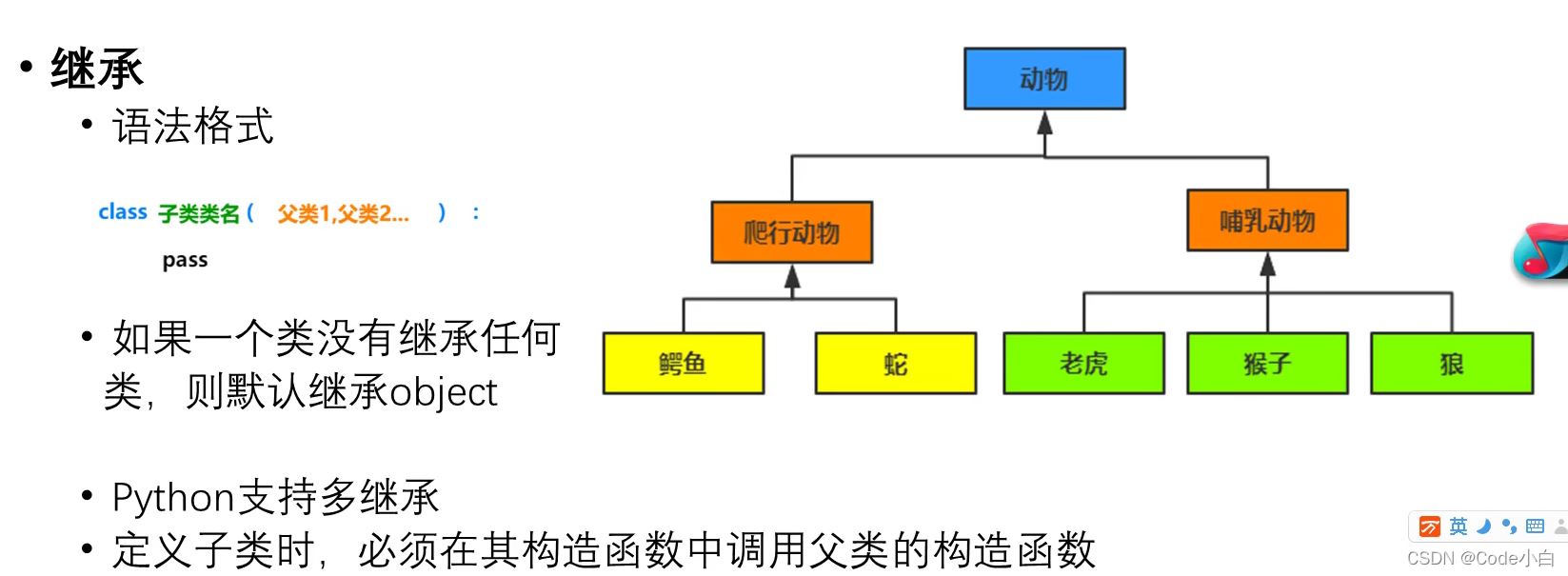
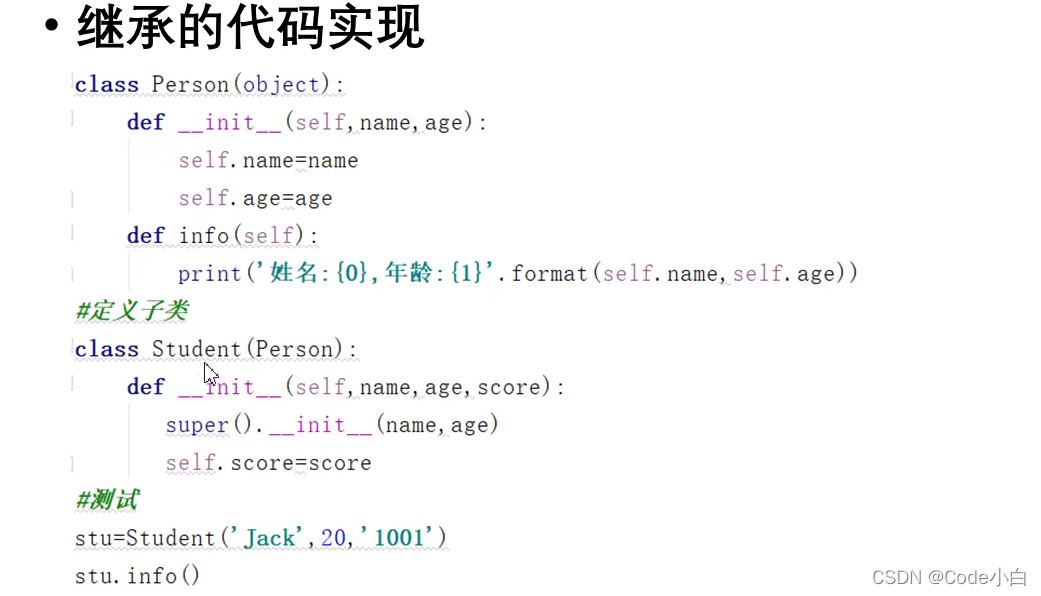
举例:
class People:
def __init__(self,name,age):
self.name=name
self.age=age
def info(self):
print(self.name,self.age)
class Student(People):
def __init__(self,name,age,sno):
super().__init__(name,age)
self.sno=sno
class Teacher(People):
def __init__(self,name,age,teachofage):
super().__init__(name,age)
self.teachofage=teachofage
student1=Student('张三',18,122)
teacher1=Teacher('李四',36,10)
student1.info() #张三 18
teacher1.info() #李四 36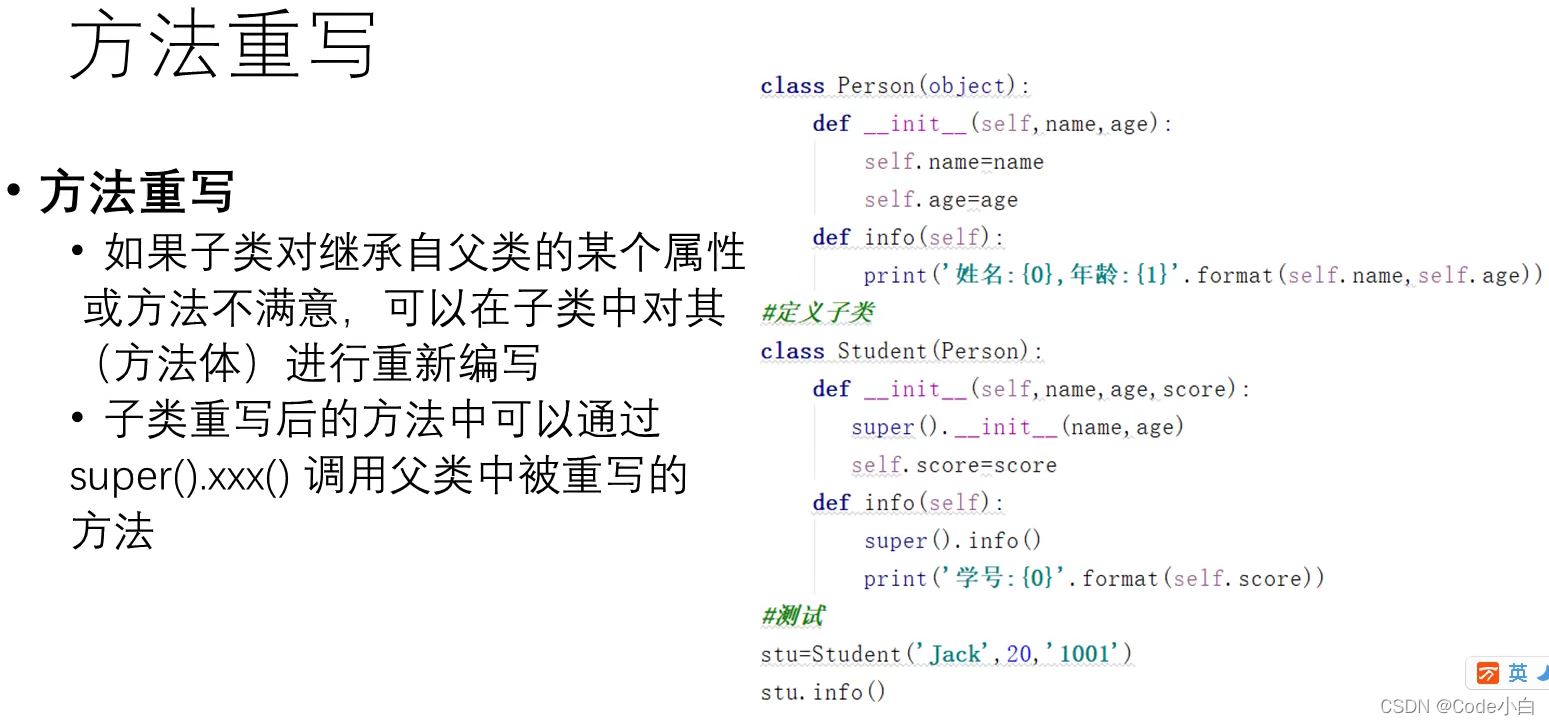
举例:
class People:
def __init__(self,name,age):
self.name=name
self.age=age
def info(self):
print(self.name,self.age)
class Student(People):
def __init__(self,name,age,sno):
super().__init__(name,age)
self.sno=sno
def info(self):
super().info()
print(self.sno)
class Teacher(People):
def __init__(self,name,age,teachofage):
super().__init__(name,age)
self.teachofage=teachofage
def info(self):
super().info()
print(self.teachofage)
student1=Student('张三',18,122)
teacher1=Teacher('李四',36,10)
student1.info()
teacher1.info()结果为:

以上是“Python面向对象和类的示例分析”这篇文章的所有内容,感谢各位的阅读!相信大家都有了一定的了解,希望分享的内容对大家有所帮助,如果还想学习更多知识,欢迎关注亿速云行业资讯频道!
亿速云「云服务器」,即开即用、新一代英特尔至强铂金CPU、三副本存储NVMe SSD云盘,价格低至29元/月。点击查看>>
免责声明:本站发布的内容(图片、视频和文字)以原创、转载和分享为主,文章观点不代表本网站立场,如果涉及侵权请联系站长邮箱:is@yisu.com进行举报,并提供相关证据,一经查实,将立刻删除涉嫌侵权内容。